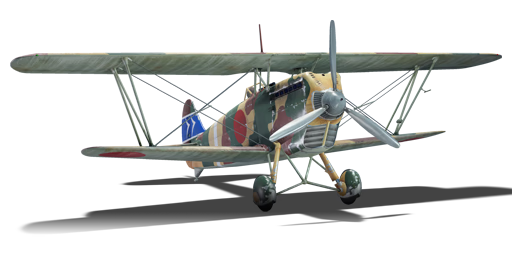

This Ki-10-II (Commander), designated as Type 95 Fighter (九五式戦闘機), belongs to the 77th Hiko Sentai (Air Combat Group), which was created from the 8th Daitai (Battalion). The unit participated in the Second Sino-Japanese War, moving from its original base in Tachiarai, Japan, to various locations in Manchuria and China. Its main task was to support the ground troops in their offensive operations. The 8th Daitai scored several victories against Chinese planes in the early stages of the conflict, but faced more challenges when the Soviets supplied their allies with I-15 and I-16 fighters. Despite being outmatched by these faster and more modern planes, the 8th Daitai continued to use its Ki-10s alongside its limited number of Ki-27s, and even managed to shoot down some Soviet SB-2 and I-16 aircraft. On July 31st, 1938, the 8th Daitai changed its name and structure to become the 77th Sentai. The unit was separated from its maintenance crew and had no subordinate battalions, which gave it more mobility and flexibility to operate from different airfields with local ground support. The 77th Sentai also adopted a distinctive tail marking, consisting of a coloured field on the fin and rudder with thin horizontal white or blue stripes. Inside the field were two stylized arrowheads (sometimes called "seagulls") that looked like sevens on the right side (representing "77"). The colours of the field indicated the Chutai (Squadron): blue for headquarters; white for 1st Chutai (with blue stripes and arrows); red for 2nd Chutai; and yellow (with blue stripes and arrows) for 3rd Chutai when it was formed.
It has been in the game since the start of the Open Beta Test prior to Update 1.27. The Ki-10-II C is no longer acquirable in the game but is retained by those who obtained it before its removal. The Ki-10-II has a good turn rate, fair climb, low speed, and minimal armour. It is faster and climbs better than other biplanes, but has weaker guns and protection. The Ki-10-II can turn-fight well at low altitudes, but should avoid stalls and spins. Its 7.7 mm guns have low fire rate and poor belts. Stealth belt is the best choice. The Ki-10 should not attack armoured targets or bombers, but focus on other biplanes or slow monoplanes. Aim for the wings, not the fuselage. Teamwork is essential for the Ki-10.
flaps
flaps
flaps
brake
control
| Belt | Belt filling | Armor penetration (mm) at a distance: | |||||
|---|---|---|---|---|---|---|---|
| 10 m | 100 m | 500 m | 1000 m | 1500 m | 2000 m | ||
| T/AP/IAI/AP/I | 13 | 12 | 7 | 3 | 2 | 0 | |
| T/AP/IAI/AP | 13 | 12 | 7 | 3 | 2 | 0 | |
| T/T/T/AP | 13 | 12 | 7 | 3 | 2 | 0 | |
| I/AP/AP/AP/IAI | 13 | 12 | 7 | 3 | 2 | 0 | |












Flight performance | |
|---|---|
Survivability |
|---|
Weaponry |
|---|